Amorgos is a tiny island in the Cyclades group of Greek islands, home to just 2,000 people. It has an area of just 48 square miles. Amorgos offers the opportunity to escape the crowds of tourists that are common on other Greek islands.
The one really unique thing about Amorgos island is that you can hike the entire island from top to bottom basically. There are hiking maps all throughout the island so they make it really easy. If you like hiking, and stunning beaches, you will love Amorgos island!
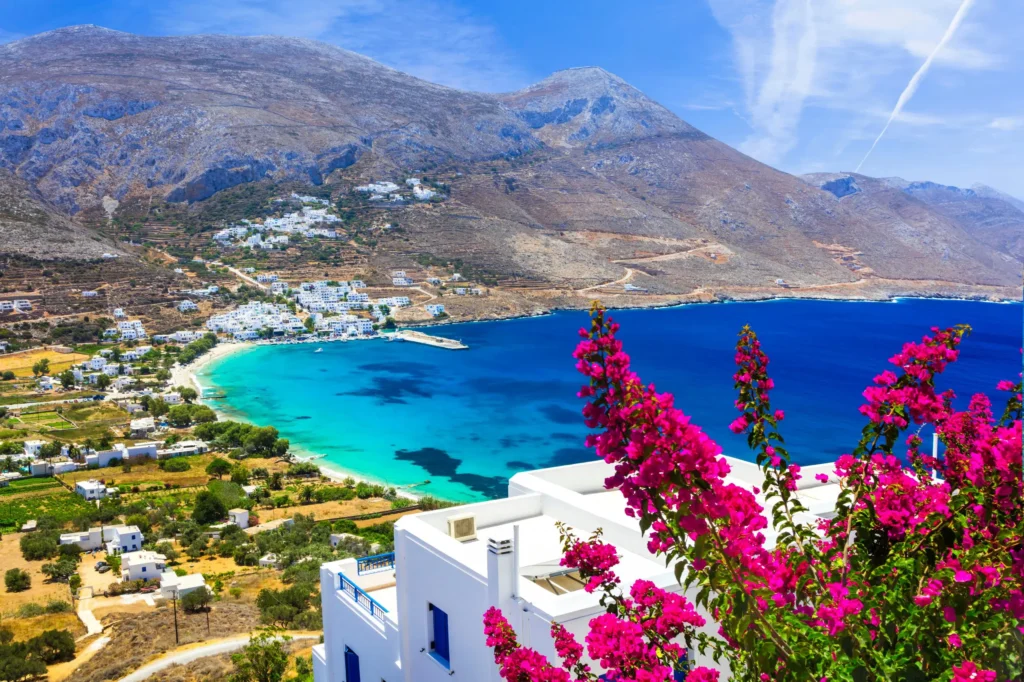
There are over 350 churches on the island of Amorgos. In every corner you go, you will undoubtedly find a church. One of the monuments that you simply cannot miss when visiting the island is the Hozoviotissa Monastery.
The Best Beaches:
From north to south, the coast of the island offers a variety of beautiful sands, small pebbles, gravel or rocks – each one is unique. The sandy beach of Aegiali is shaded by salt cedars and other Aegean vegetation that flourishes by the sea. On the other side of the bay is Levrossos, a cozy, less frequented sandy cove; a little further along the coast are two other nice sandy beaches, Psili Ammos and Hohlakas.
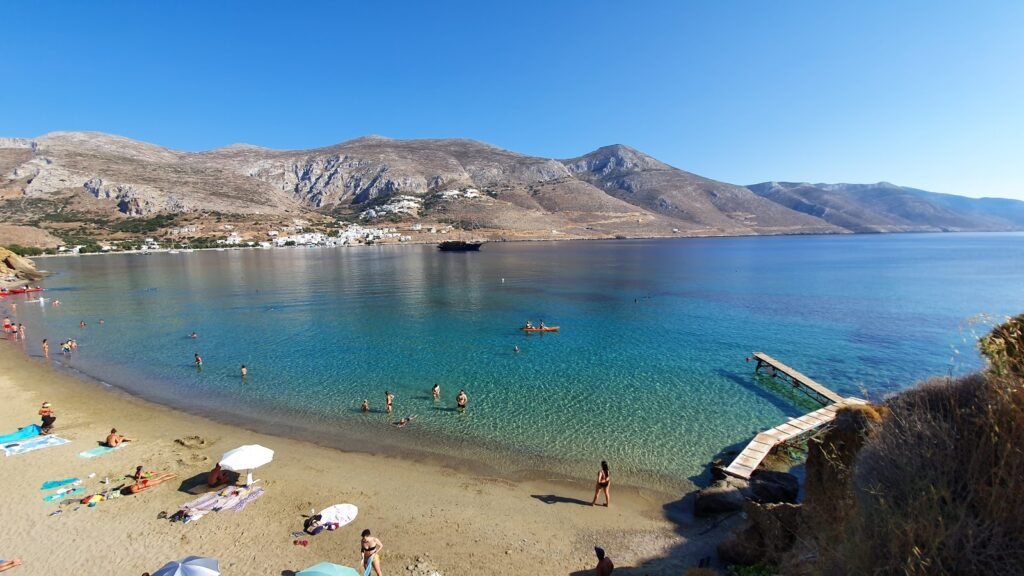
From Aegiali’s harbor are the fine pristine shingle beaches at Mikri Vlihada and Megali Vlihada. Further along the coast, past the rocky shorelines at Kroukellos and Metallio before turning west, is Sparti bay – a natural harbor that reaches depths of 500 meters. The island’s coast then extends into Halara, a narrow strip of beach lined with pebbles and rock shelves. Moving west, the coast reaches Ayia Anna, a mesmerizing cove beneath the sheer precipice to which the Hozoviotissa monastery clings.
Sightseeing:
The Monastery of Hozoviotissa
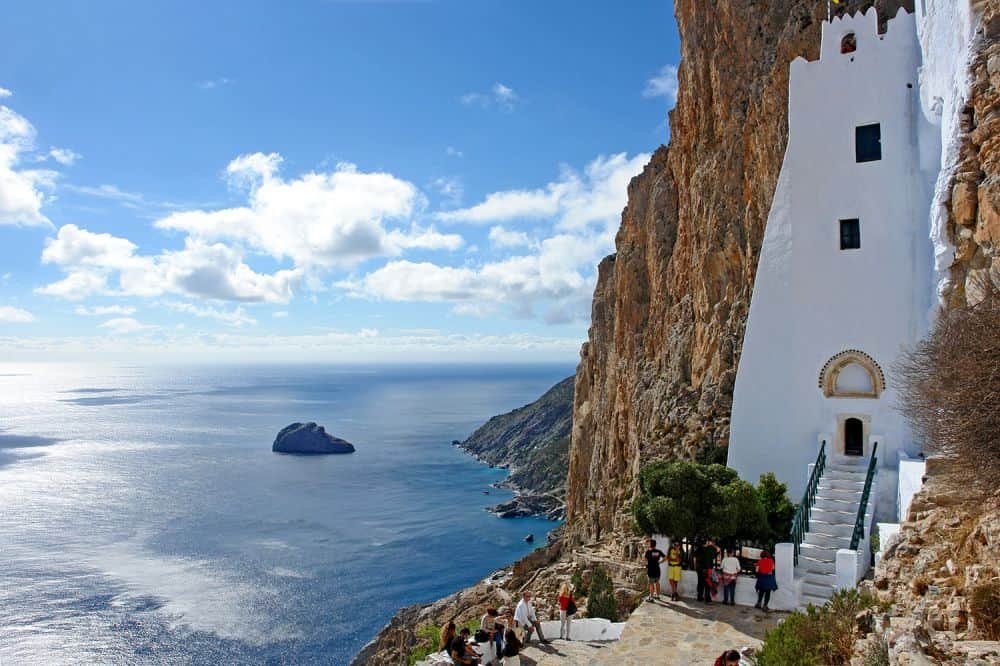
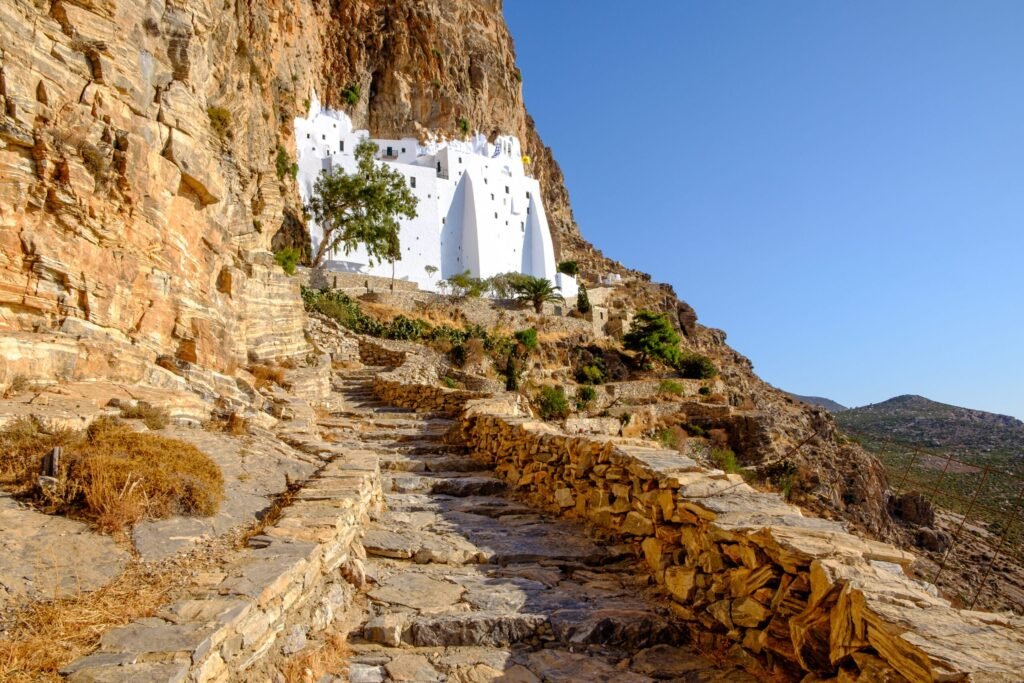
The Monastery of Panagia Hozoviotissa is one of the most iconic religious sites in Greece. It is home to monks and is open daily, but at specific times. The monastery is a spectacular white building carved into the rock, almost 300 meters above sea level.
It is located on the southern coast of the island, near Amorgos Schora and offers unforgettable views of the endless blue sea. To get there, you have to climb a steep, paved path with 360 steps to the entrance. The monastery, visible only from the sea, attracts thousands of tourists every year.
Agia Anna Chapel
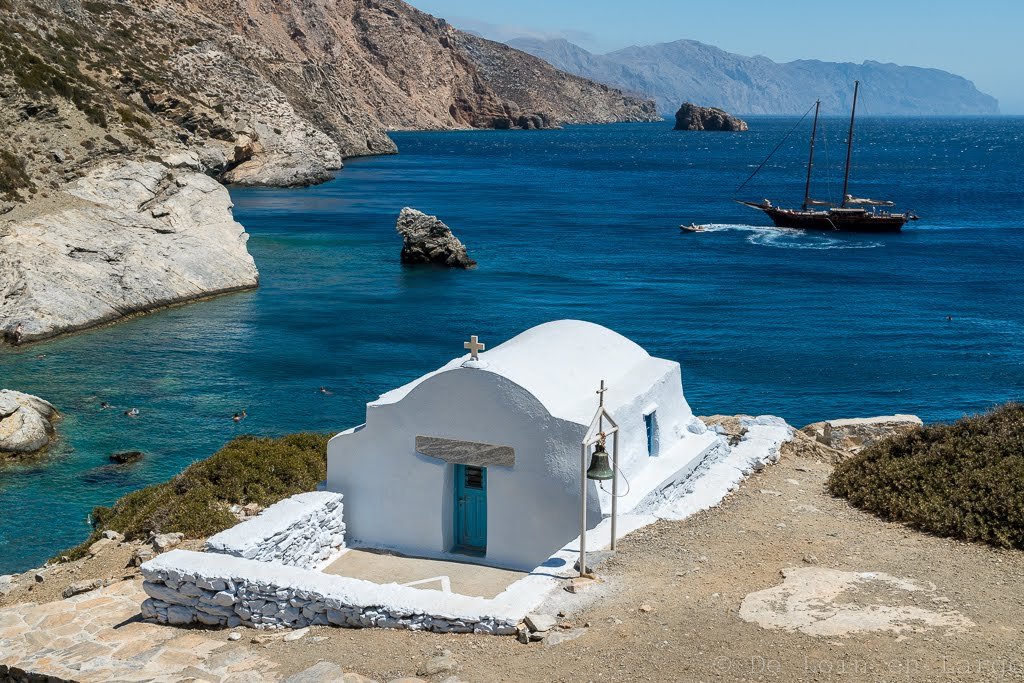
Agia Anna Beach in Amorgos and the chapel of the same name are the most famous beaches on the island. It was the setting for Luc Besson’s classic film The Big Blue, starring French actor Jean Reno.
The small picturesque chapel of Agia Anna is distinguished by its traditional style and is the perfect venue for romantic weddings. Many couples visit Amorgos tin order to get married on this wonderful place.
Venetian Castle
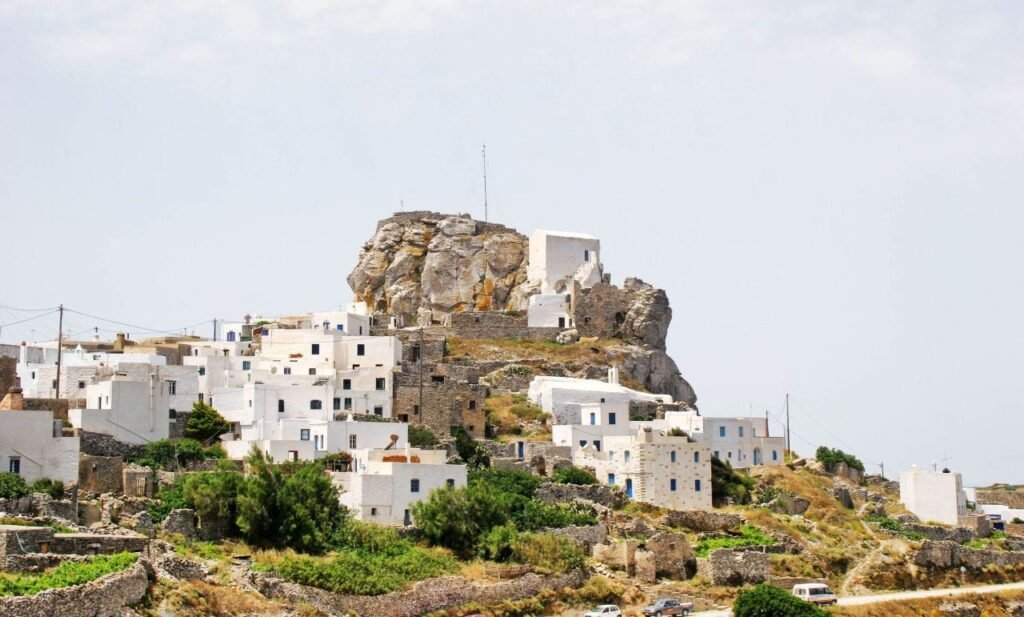
The Venetian castle built on the top of a huge rock (at an altitude of 350 meters above sea level) is the pride of the capital. All these elements together create a beautiful image of a defensive medieval town.
The building was built in the 13th century by Venetian rulers as a defense against the raids of Saracen pirates. This beautiful Venetian residence, which is now a museum. Among the exhibits are various finds, mainly sculptures and inscriptions from excavations that were periodically held on the island.
Ancient Minoa

Ancient Minoa is located just above the port of Katapola on the western side, roughly in the center of the island, on Moundoulia Hill.
Continuously inhabited from the 11th century BC to the 4th century AD, Ancient Minoa contains the ruins of several structures and buildings. It is said that Ancient Minoa actually began as the summer residence of Minos, the first king of Crete.
The wreck of the Olympic ship
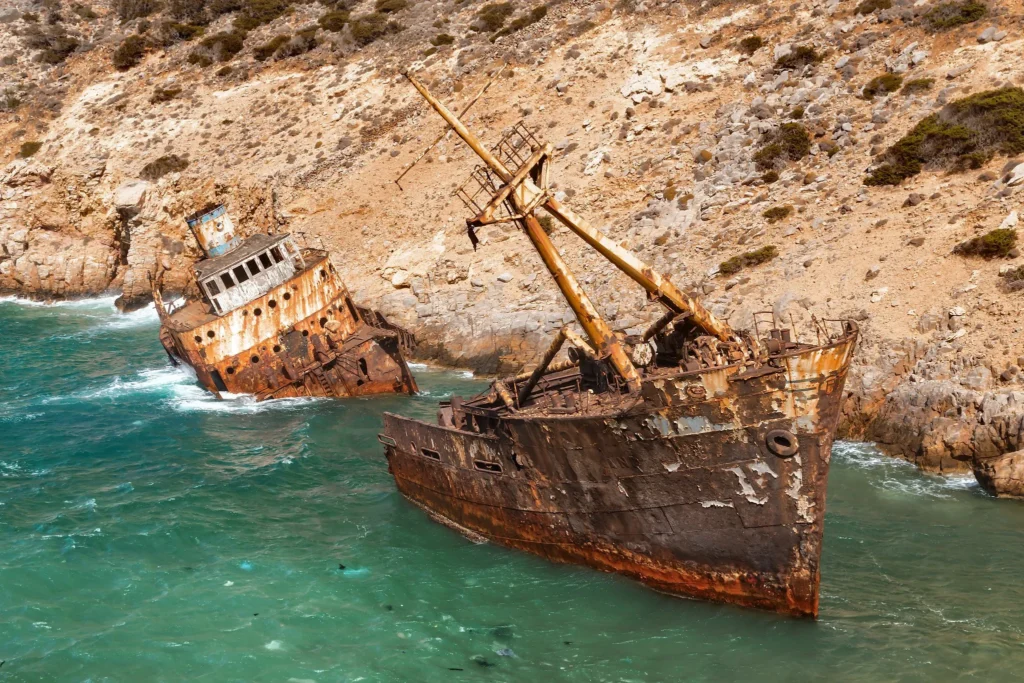
The wreck of the Olympia sank in February 1980. but fortunately all the crew were saved. The wreck of the ship appears in many scenes of the film “The Big Blue” by Luc Besson. It is also a popular diving spot on the island.
Capital:
Amorgos Town (Chora)
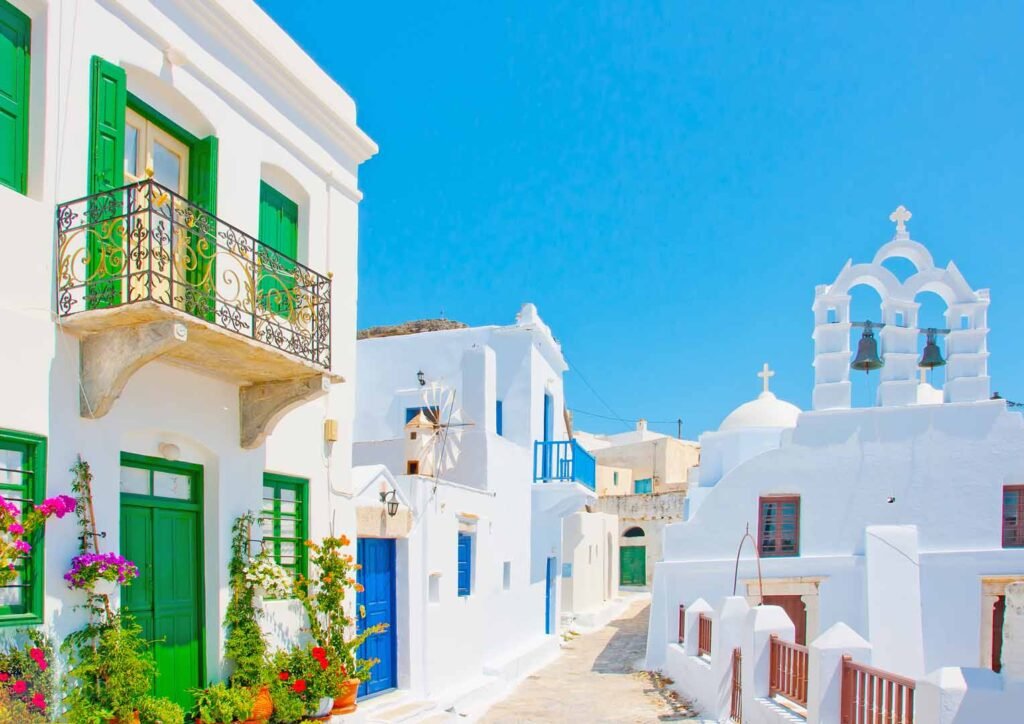
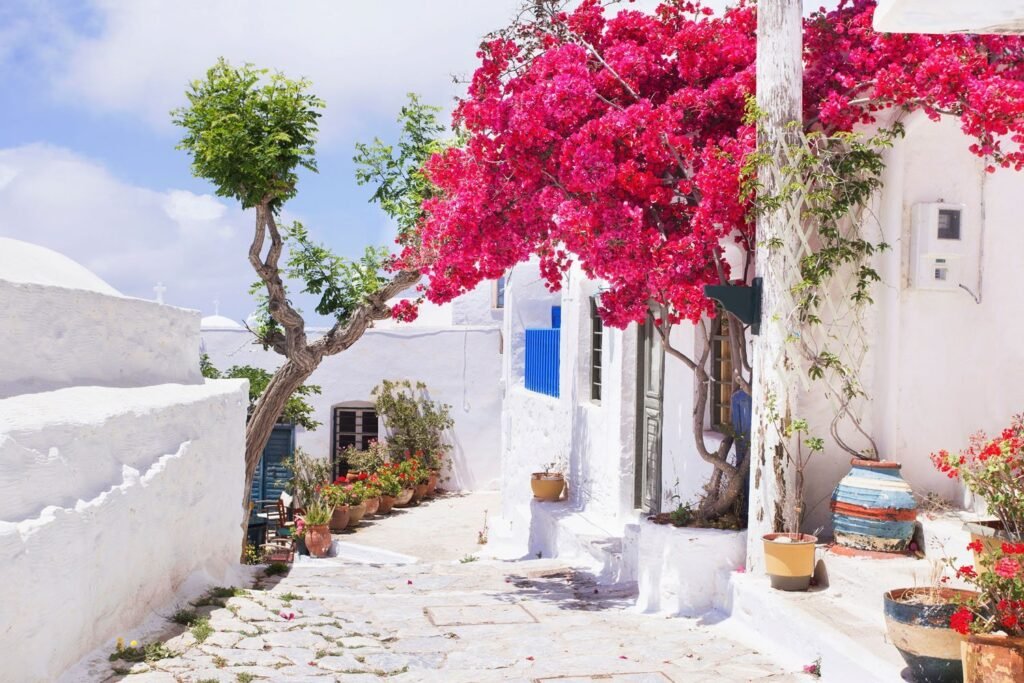
One of the must-visit attractions in Amorgos is its main town, Chora. The town is known for its cobbled streets and charming squares such as Loza Square and Ano Plateia. A visit to the 16th-century Gavras Mansion (Venetian Castle) is a must see beacuse as it houses the island’s archaeological museum.
The capital of Amorgos, situated 400m above sea level. Surrounded by lovely windmills and full of beautiful churches, outspread white houses and stone paved little streets, Chora has an incredible and particular atmosphere.
The Ports:
Katapola
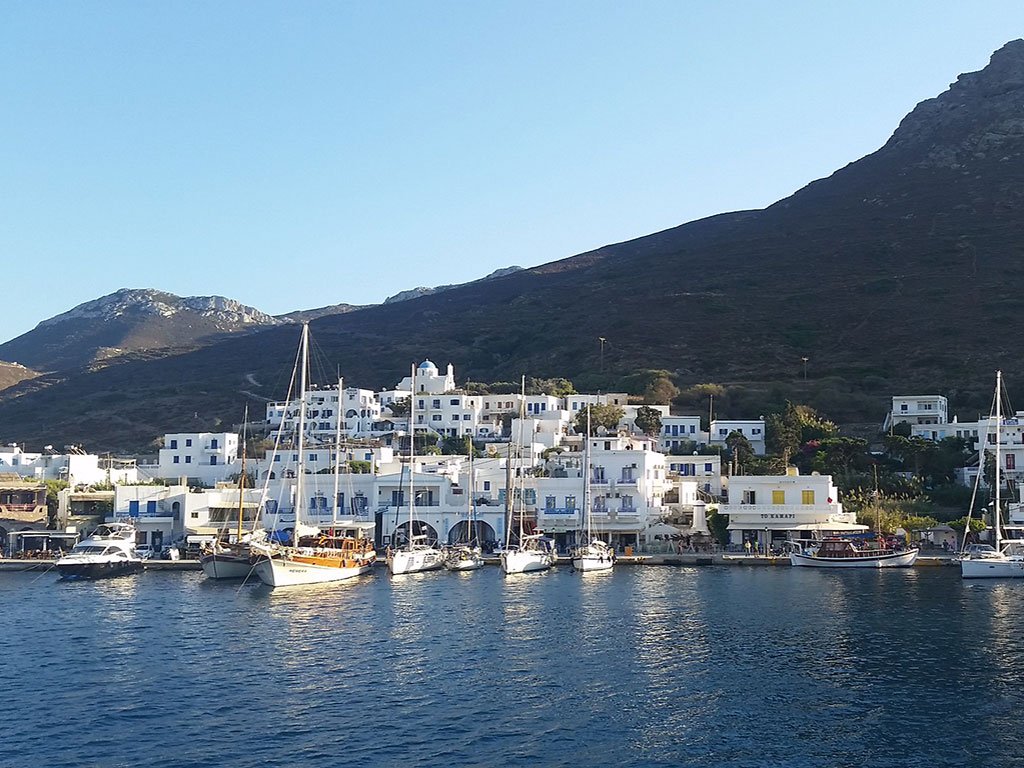
The port of Katapola (the most important) is located in a large bay of the same name. Yachts moor in the port at the southern quay, east of the ferry part. In addition to the large ferries, Katapola is also visited by a smaller, local ferry that moors in the part intended for yachts.
Aegiali
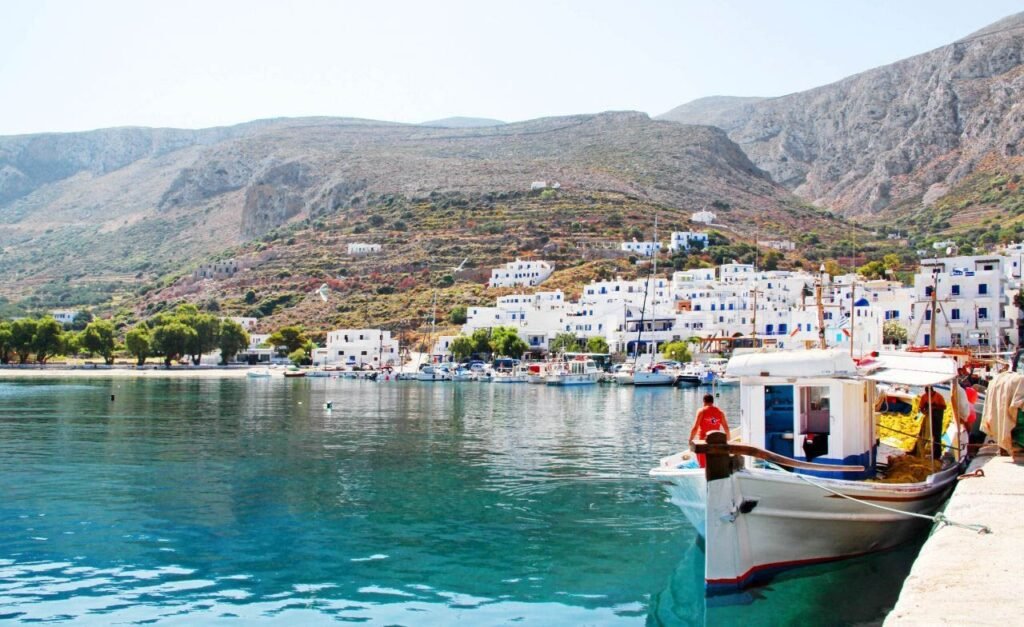
Aegiali is the second smaller port but ferries and sailboats also dock here. The port is located in the north of the island.
Important Museums:
Archaeological Museum
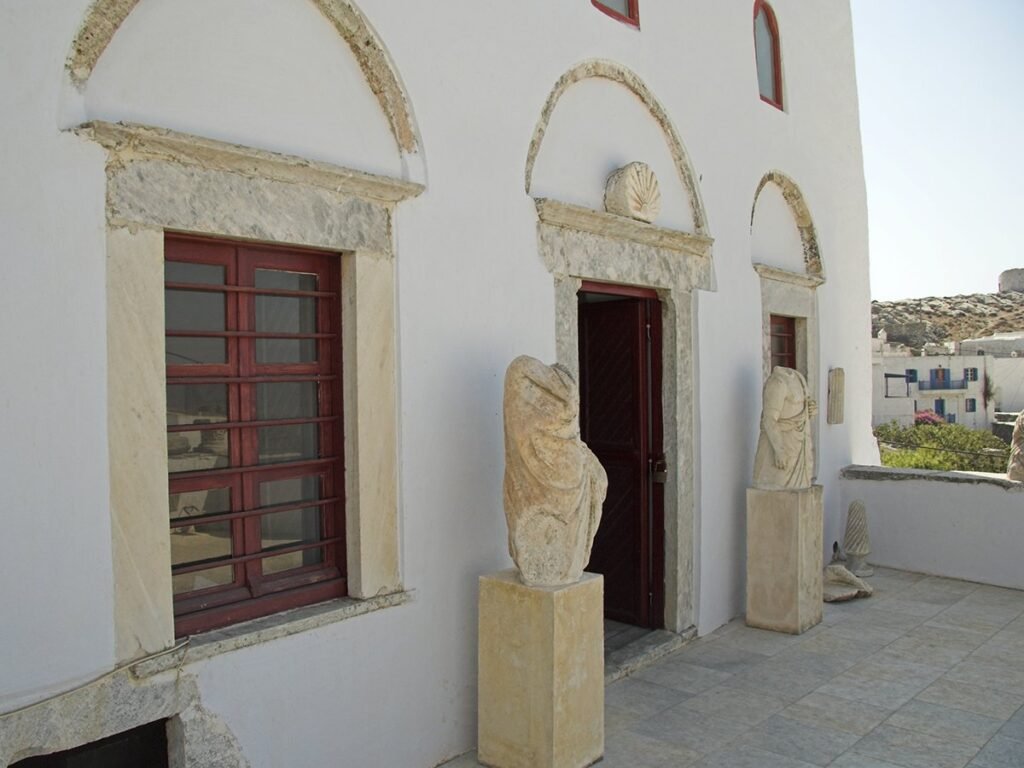
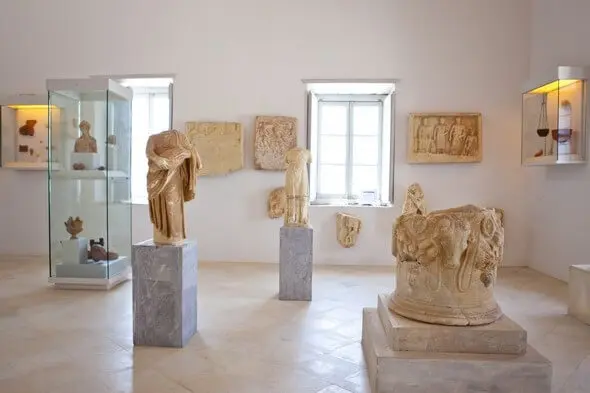
The Archaeological Museum is housed in the Gavras Tower (castle tower), a building of Venetian architecture. The finds come from three ancient cities of Amorgos (Aegiali Arkesini and Minoa), dating from prehistoric times to the Roman period and the 2nd century AD.
The museum’s most important exhibits include a marble statue of a male torso found in Tholaria Aegiali and a marble female torso representing the goddess Artemis. The museum has been joined by the Amorgos Emmanuel Ioannidis Archaeological Collection, which includes artifacts such as statues, sculptures, pottery and other objects dating from 3000 BC to the 3rd century AD.
